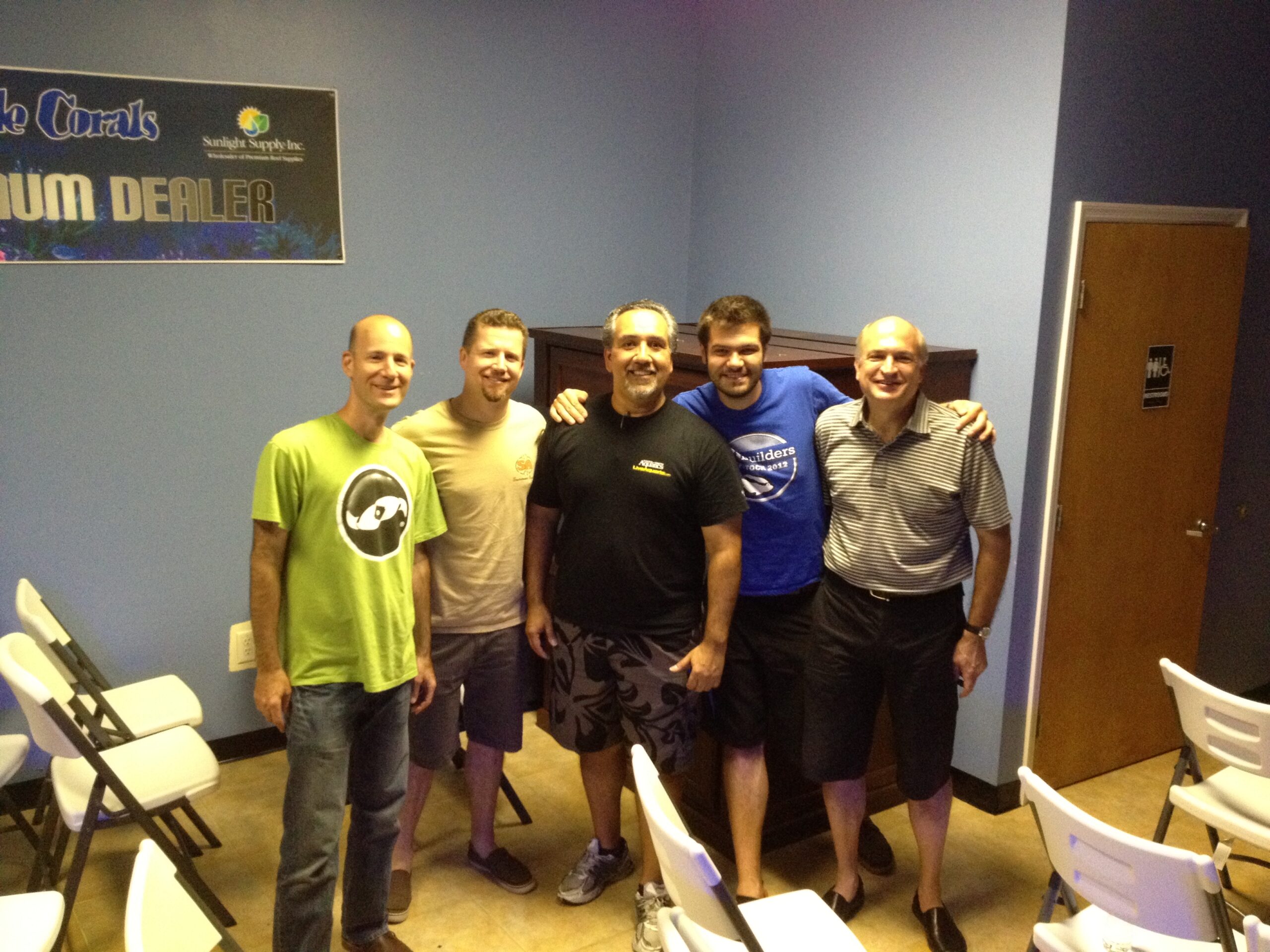During my early years in the hobby virtually everyone I came into contact with, from shops to other hobbyists all said the same thing: “Keeping a saltwater tank is too difficult so don’t even bother trying”.
Looking back I can understand this as back then there was little understanding of the biology and chemistry that go into making a tank successful. And while you need some understanding of these areas you do not need a pH.D. Even after you get into the hobby, some still believe that those who are successful have some secret formula that they aren’t sharing or that there is some magic process or secret elixir that is eluding them.
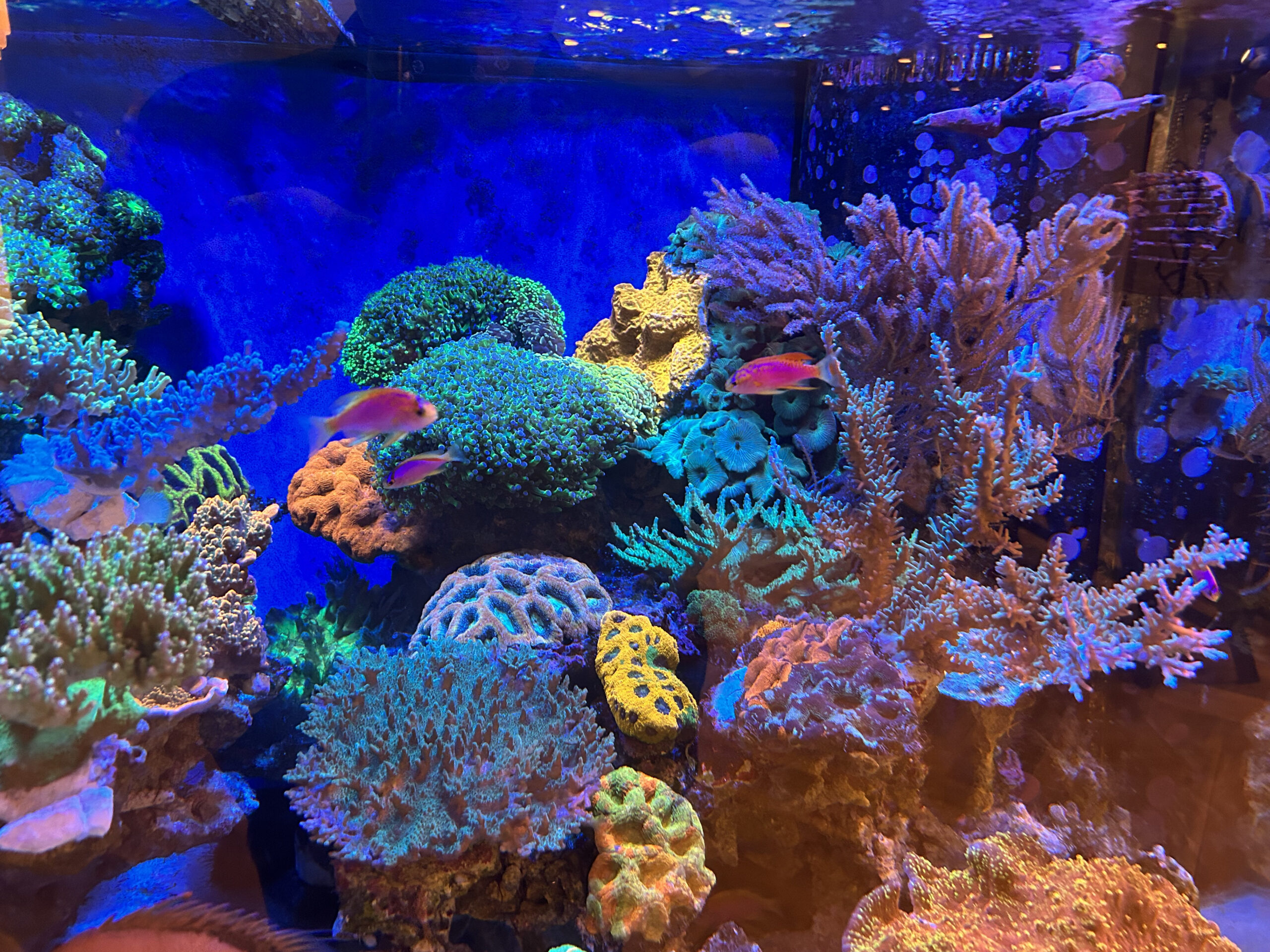
Fortunately, none of these premises is true. While the hobby may be somewhat difficult at first, it does get easier over time, and I can say with complete honesty that no one has a secret formula for success. While there are an infinite number of ways to have a successful tank every tank is different, after having reef tanks for over 40 years, I have developed some tips for people starting out that have proven to be helpful and that may help in speeding up their success.
Plan
The first thing I tell anyone interested in the hobby or who are starting out is to plan everything as much as possible. This is not a hobby where you can walk into a shop, buy a tank, a bag of salt, and a pair of clownfish, and have success. It takes planning and at least a rudimentary understanding of what you are getting into. As a corollary to proper planning, I also suggest that everyone read as much as they can about what is necessary and how to get started.
While the internet is a great resource for this, there is also a lot of misinformation and anecdotal information that is less helpful than it should be. I suggest reading some of the many books that are out there that do a good job of laying the groundwork. Books Like Bob Fenner’s The Conscientious Aquarist and the three books by Julian Sprung and Charles Delbeek, as well as the works of Alf Nilsen and Svein Fossa for example.
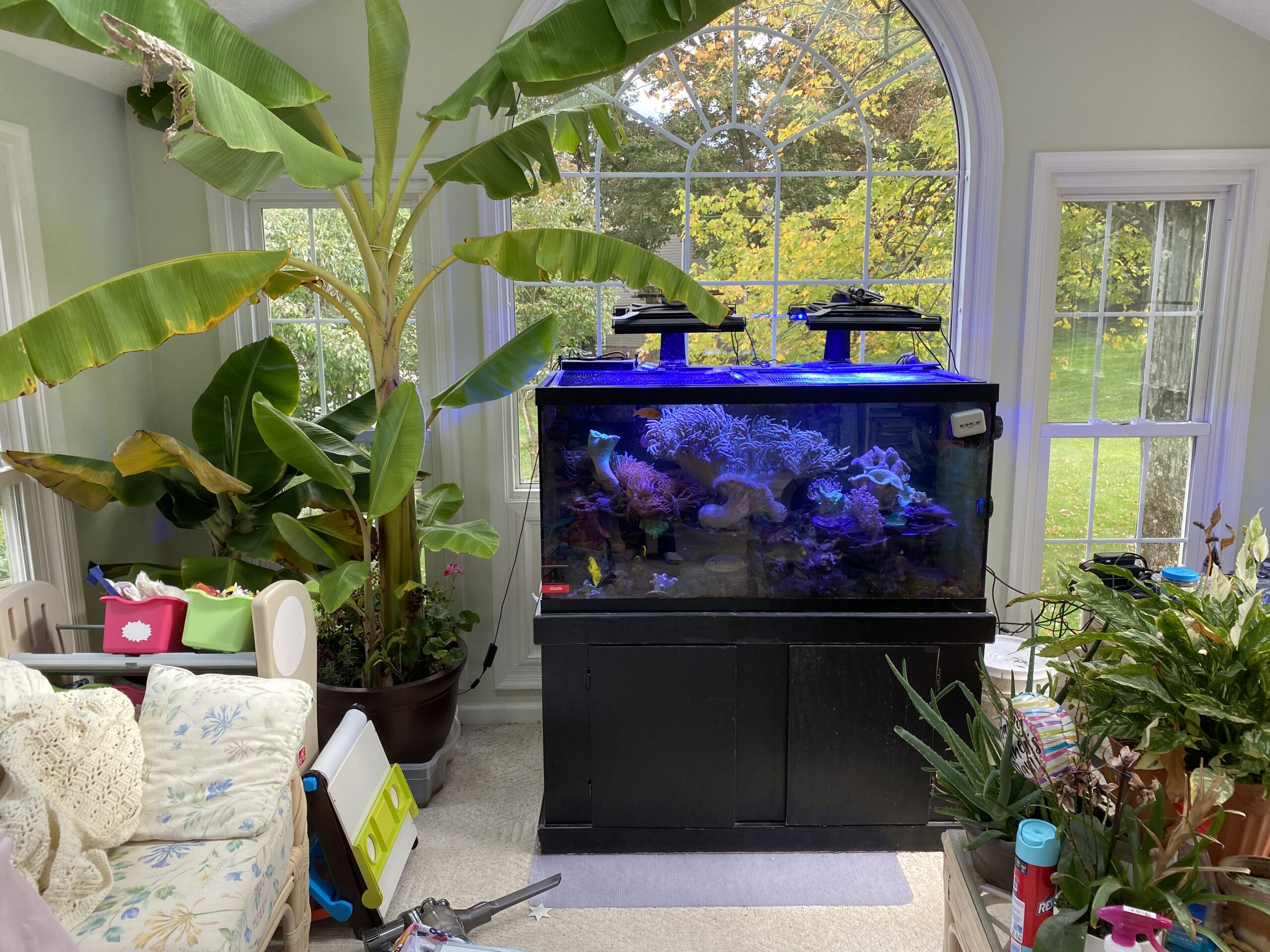
While these books may seem old, they do an excellent job of laying the foundation for what one needs to know to get started in the hobby. Once the basics are understood then it is possible to plan what equipment is needed, plan a budget, and most importantly plan the time to get everything done properly. Planning should include where a tank will rest and where all of the equipment will be housed. In addition the location of the electrical outlets as well as how water will be gotten to it and from the tank and even something as simple as what to do when a spill occurs. Understanding the moving of water should not be neglected as while filling a tank via buckets of water may seem like fun and good exercise initially, the drudgery of having to do it regularly quickly displaces this feeling.
Picking out the right equipment for the tank is one of the fun things about planning and in this case, I would use the internet to see what people are saying about various pieces of equipment and especially what some see as their shortcomings. There are no perfect pieces of equipment, otherwise everyone would only be using it. Since equipment changes in this hobby, talking with others about their experience with a piece of equipment is a great way to learn and get insight as to whether a piece of equipment is right for you. During this stage of planning you can also start to plan on how you want to aquascape the tank as well as what fish and corals you would like to house.
Tank size
Lastly, when you are doing this planning be realistic in terms of selecting a tank that you can manage. Bigger isn’t necessarily better if the bigger tank is something that requires so much time and effort that it is unmanageable. It is better to have a smaller tank that can be taken care of meticulously than a bigger tank whose husbandry is unmanageable. Look at tanks of all different sizes to get an idea of what you think you can manage easily. While for the most part, you get what you pay for when choosing equipment, that is the better equipment generally commands a higher price, this in my opinion may not be true of fish and corals. In my experience, I get just as much enjoyment from a $50 coral as I do from a $500 coral or a $30 blenny as a $350 angelfish. This is why planning and budgeting is important when you are starting out.
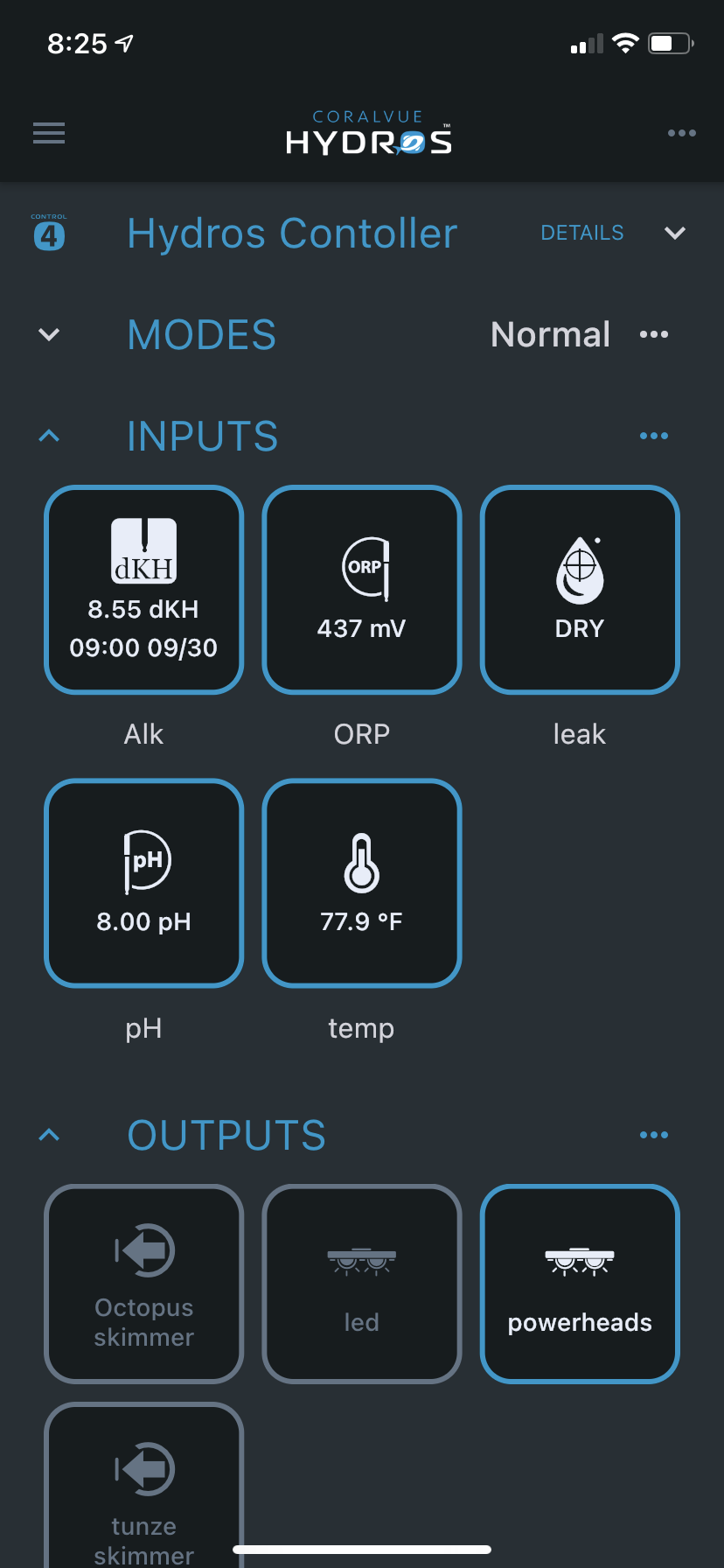
As someone just starting out you need to accept that you will make mistakes and as best you can plan for them. These can be as simple as knowing that there will be water spills both large and small and that you will lose fish and in the worst case there will be a disease outbreak. Admittedly you cannot really plan for mistakes, so by that I mean understand that you will make them, and while it will be frustrating, don’t let them drive you from the hobby but rather learn from them, as we all make mistakes, even after forty years of doing this. One mistake that is crucial that you avoid is not understanding the time that this hobby will take and then trying to rush something.
Some things about this hobby simply cannot be rushed like curing the live rock and making sure the bacterial population is fully developed. Allowing a new coral time to settle in and start to grow also requires time and if you are constantly moving it around due to impatience it will never grow. The same is true when you make a change in the tank such as a new lighting schedule or adding a new trace element, they will all take time to show their effect so allowing for this is important.
Part of the process of learning from mistakes is to keep track of everything via a log or tank diary of some sort. Over the past couple of years, I have come to realize that I can’t remember everything, especially since I keep five tanks. So when a new fish, coral, or piece of equipment is added a change of any type is made I have found that the time it takes to log this in pays dividends when a month or so later its impact can be understood when this would not have been the case had I not kept track of the change. For this reason, every change addition or even water change is noted in a log. In this way trends can be noted, reasons for negative things explained, and longevity of fish, corals, and equipment can all be kept track of.
Be organized
This logging of tank data is part of a bigger tip, and that is to be organized. Start from the beginning by having specific places for everything and as soon as you use it, put it back in its place. I have only become more organized during the past few years and while I initially fought the need to do this, I have found that being organized, especially in this hobby saves far more time than I ever could have imagined. For example, before things got organized, I would lay down the coral cutters wherever I was using them. Then whenever I needed them, I would always spend at least several minutes and sometimes hours trying to find them. Now they are always put in the same place and as result no time is wasted looking for them. And this is how it now is for every piece of equipment I use in my tanks.
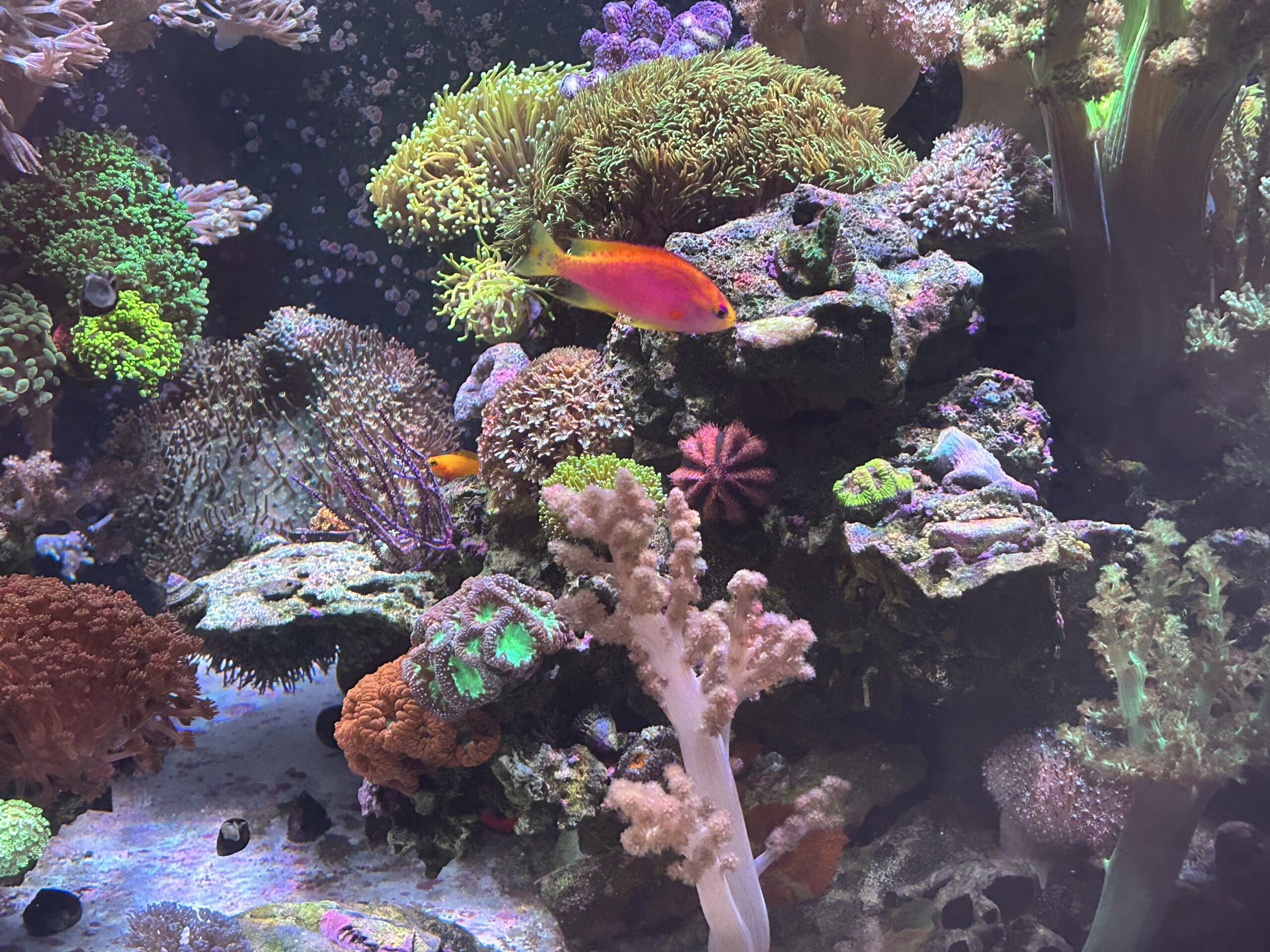
Organization is also good in terms of performing tasks on the tank. Tasks like testing, water changes, and adding supplements are all done in an organized manner in that they are done at either the same time each day or week. By being organized in this fashion allows it to be determined more readily what effect doing something has on the tank and also keeps the testing results more consistent. Keeping a reef tank, like most things in life is based on precedent. That is, if you start off doing something from the start you are more likely to continue doing it throughout, so set the precedent early of doing regular testing, water changes, and maintenance, and over time even as you get more and more successful you are more likely to continue doing these tasks.
In regards to testing, there is one tip that I cannot emphasize enough: Do regular testing of as many parameters as possible as often as you can, especially when a tank is getting started. My regular tests include Ammonia, Nitrite, Nitrate, Salinity, pH, Alkalinity, Calcium, Magnesium, and Phosphate. All of these tests are done at least weekly at the same time while Alkalinity is done 4-6 times a day via my Alkatronic unit, but a separate test is still done on it once a week when these other parameters are tested.
In addition to these tests, an ICP test is done once every month when the tank is doing well and once every two weeks if a major problem is detected. This test measures the levels of many of the trace elements necessary to maximize the health and color of many corals. As mentioned above, all of these test results should be kept in a log so that trends can be spotted early and changes made before they become problematic.
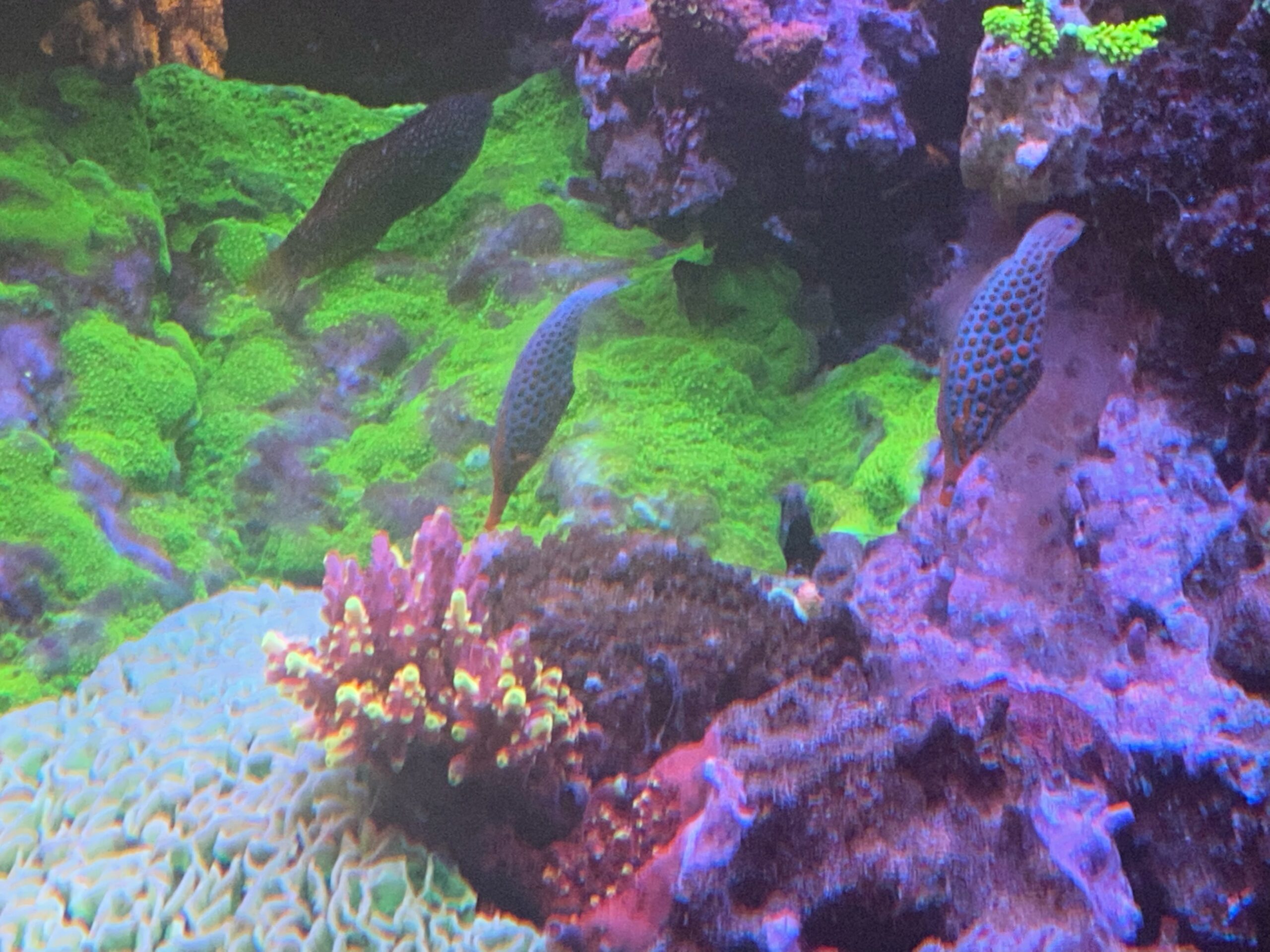
One thing that new hobbyists tend to fret about is that when they test if a number is not where it is supposed to be, they immediately feel the need to bring it to the proper level as quickly as possible. This is a mistake as most parameters tend to change gradually over time and this slow process is well-tolerated by most corals. When a parameter is adjusted too quickly, even when it is brought to the perfect level, it may be more stressful to the coral than the levels that do not match the desired ones. Stability is far more important to the health of corals than are absolute numbers, so do not chase numbers at the expense of stability.
Corals will respond far more quickly in a negative way to instability than they will to a parameter or two being off. For this reason, nothing should ever be overdosed, overfed, or changed dramatically in a tank. Any changes should be done over time. I generally take at least a month any time I make a change on just about anything on one of my tanks. It needs to be understood that more than anything this a hobby of patience. Impatience is quickly rewarded with something failing or dying and this hobby has taught me patience far more than anything else in my life.
Patience
As mentioned above patience is critical for long-term success in this hobby, but despite the need for this we all tend to buy things on impulse. Whether it is the latest beautiful fish or a coral we have never seen before, we all tend to do it. While it may not be a problem every time, if it occurs too frequently eventually a fish or coral will be purchased that will cause problems in a tank. The tiny angelfish or tang that barely ate in the local fish shop gets bigger and has a hunger for LPS corals or a small encrusting coral that was just a nub on a plug takes off and starts to overgrow its neighbors. I’ve experienced these problems and many more and they were all the result of impulse buying and my not doing my homework prior to purchasing something. So as mentioned above, have a plan, stick to it and if something comes along that you have to have, do your homework before acquiring it.

While very few of the above tips are fun, this last tip is, and it is probably one of the reasons I have remained in the hobby for as long as I have: make friends in the hobby and talk with them regularly. After having been in the hobby for so long, one of the things I am most proud of is that as a result of this hobby I now have people who have been good friends for much of that time. Making friends in this hobby is good for so many reasons including it gives you someone to bounce ideas off of, as well as share problems and successes with.
